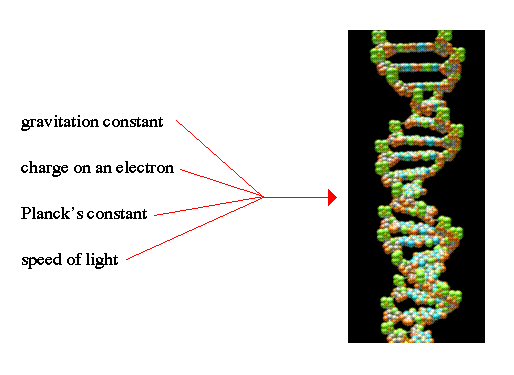
The success of science in understanding the macroscopic, microscopic and cosmological worlds has led to the strong belief that it is possible to form a fully scientific explanation of any feature of the Universe. However, in the past 20 years our understanding of physics and biology has noted a peculiar specialness to our Universe, a specialness with regard to the existence of intelligent life. This sends up warning signs from the Copernican Principle, the idea that no scientific theory should invoke a special place or aspect to humans.
To understand this "specialness", consider that all the laws of Nature have particular constants associated with them, the gravitational constant, the speed of light, the electric charge, the mass of the electron, Planck's constant from quantum mechanics. Some are derived from physical laws (the speed of light, for example, comes from Maxwell's equations). However, for most, their values are arbitrary. The laws would still operate if the constants had different values, although the resulting interactions would be radically different.
Examples:
All the above constants are critical to the formation of the basic building blocks of life. And, the range of possible values for these constants (and still result in complex molecules) is very narrow, only about 1 to 5% for the combination of constants. Outside this range and lifeforms (in particular, intelligent life) would be impossible.

It is therefore possible to imagine whole different kinds of universes with different constants, all equal valid within the laws of Nature. For example, a universe with a lower gravitational constant would have a weaker force of gravity, where stars and planets might not form. Or a universe with a high strong force which would inhibit thermonuclear fusion, which would make the luminosity of stars be much lower, a darker universe, and life would have to evolve without sunlight. Why don't those Universes exist? Why does our Universe, with its special value exist rather than another? Is there something fundamental to our physics that makes the present values for physical constants expected?
All these conditions basically ask three questions 1) why is there any structure at all to the Universe, 2) why does this structure lead to the capability for life to exist, and 3) why does life lead to intelligence to understand this structure?.
This dilemma of the extremely narrow range of values for physical constants that leads to the evolution of conscious creatures, such as ourselves, is called the fine-tuned Universe or the anthropic principle, and has the form:
Anthropic Principle: If the Universe has those properties which allow life (intelligent) to develop within it at some stage in its history, then one of the following must be true:
The `designed' Universe runs into logical problems. For a God of traditional theism is eternal, omnipotent, omniscient, perfectly free and perfectly good, thereby unlike any creature of agent that we are familiar with in our everyday lives. Evidence of intelligent design is based on empirical information about what designers often do and what they rarely do. These judgements are based on our knowledge of human intelligence and the more our map of intelligent design departs from the human case, the more we are in the dark about the ground rules for inferring intelligent design.
Weak and Strong Anthropic Principle :
The anthropic principle usually divides into two types, weak and strong. The weak anthropic principle simply states that the current Universe is of the form that allows intelligent observers. In other words, there is the right amount of complexity and time for intelligence to evolve. This is obviously true and few people disagree with this formulation of the anthropic principle.
The strong anthropic principle says the Universe has these conditions because it *must* have them in order to have intelligence life (us). Our existence is then end goal of a plan. The strong form of the anthropic principle goes against the Copernican principle by insisting the we are special, an intellectual center of the Universe (all intelligent species would be at their "center"), because we exist and think.
The strong form seems extreme and the weak form seems unsatisfying (if you heard of a man surviving a firing squad, would you not want to know why?). The key focus here is that a naturalistic stance for science requires that the Universe is causally closed. That science is complete and the forces of physics are the only forces in the Universe and everything can be explained by those forces. The anthropic principle is seen as a challenge to the naturalistic view and requires an "outside" force or guiding deity.
So the philosophical dilemma is that the constants, and laws, of the Universe on a microscopic (atomic constants), macroscopic (electromagnetic forces) and cosmological levels all appear to be extremely fine-tuned in order for life and intelligence to evolve.
Anthropic Principle and Circular Reasoning :
One of the first dilemma's involving the anthropic principle is its inherent circularity. This is also called the fine-tuning or selected observer effect. This states that it is extremely difficult, perhaps impossible, to assign any probability or logic to unique situations where we have only one example (i.e., us). Thus, is the anthropic principle guilty of being a tautology or circular reasoning.
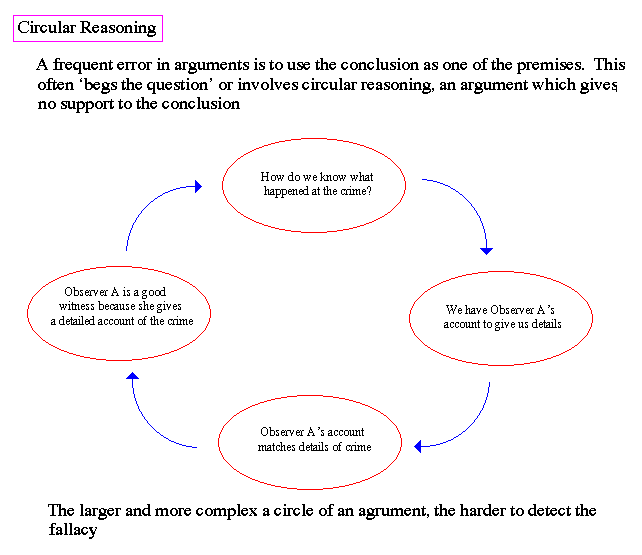
With the respect to our existence and the Universe, the error in reasoning is that because we are here, it must be possible that we can be here. In other words, we exist to ask the question of the anthropic principle. If we didn't exist then the question could not be asked. So there is nothing special to the anthropic principle, it simply states we exist to ask questions about the Universe.
An example of this style of question is whether life is unique to the Earth. There are many special qualities to the Earth (proper mass, distance from Sun for liquid water, position in Galaxy for heavy elements from nearby supernova explosion). But, none of these characteristics are unique to the Earth. There may exists hundreds to thousands of solar systems with similar characteristics where life would be possible, if not inevitable. We simply live on one of them, and we would not be capable of living on any other world.
This solution is mildly unsatisfying with respect to physical constants since it implies some sort-of lottery system for the existence of life (there are many planets out there, i.e., many cards in the deck), but we have no evidence of previous Universes.
Thermodynamic Universe:
Boltzmann, a famous physicist at the turn of the 19th century, wondered why the Universe was so far from thermodynamic equilibrium. Stars shine, life exists, these are all things that are not in equilibrium. For example, your refrigerator is not in equilibrium (which is nice for the ice cubes you need). Unplug it from the wall and within a couple days it will be in equilibrium with the room (the ice is melted). Now if the Universe is infinite in space and time (its not), then Boltzmann reasoned then its extremely unlikely that the conditions today exhibit a significant departure from equilibrium.
Therefore, a non-equilibrium Universe seems to be a requirement for the existence of observers, like us. In an infinite Universe, there will be statistical fluctuations which will always create minor excursions from thermodynamic equilibrium. Major excursions, while rare, are possible in principle. In an infinite universe there will always be astronomically large regions somewhere which, solely on grounds of chance, exhibit sufficient departure from equilibrium to support the emergence of biological organisms. By hypothesis, ours is one such (exceedingly rare) region.
Boltzmanns original argument is unsatisfactory, because the existence of human observers does not require a Hubble-sized non-equilibrium region of the universe. Merely a solar system region would suffice, and a fluctuation on this much smaller scale is overwhelmingly more probable than a cosmic-scale fluctuation. Today, however, Boltzmanns assumption of an infinitely old and uniform universe is discredited. Nevertheless, his basic reasoning may still be applied within the context of inflationary big bang cosmology.
Cosmological Constants:
The situation became worst with the cosmological discoveries of the 1980's. The two key cosmological parameters are the cosmic expansion rate (Hubble's constant, Ho, which determines the age of the Universe) and the cosmic density parameter (Ωo), which determines the acceleration of the Universe and its geometry).
The cosmic density parameter determines the three possible shapes to the Universe; a flat Universe (Euclidean or zero curvature), a spherical or closed Universe (positive curvature) or a hyperbolic or open Universe (negative curvature). Note that this curvature is similar to spacetime curvature due to stellar masses except that the entire mass of the Universe determines the curvature.
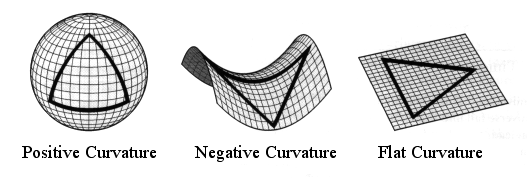
The description of the various geometries of the Universe (open, closed, flat) also relate to their futures. There are two possible futures for our Universe, continual expansion (open and flat) or turn-around and collapse (closed). Note that flat is the specific case of expansion to zero velocity.
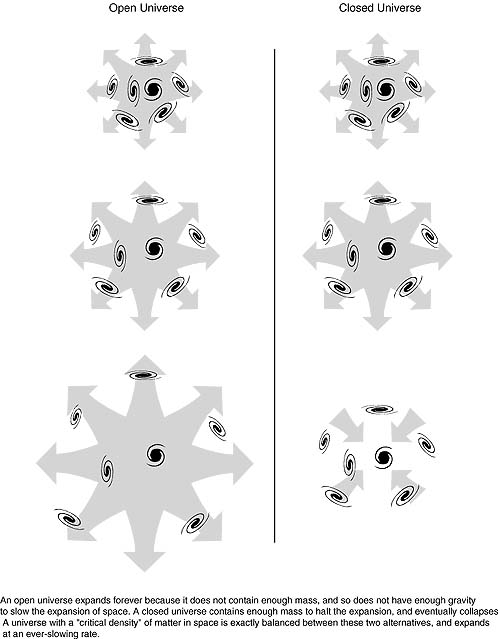
Current values for the critical density range from 0.1 to 1, which produces a new dilemma from modern cosmology, the flatness problem.
The flatness problem relates to the density parameter of the Universe, Ω. Values for Ω can take on any number, but it has to be between 0.01 and 5. If Ω is more than 0.01 the Universe is expanding so fast that the Solar System flies apart. And Ω has to be less than 5 or the Universe is younger than the oldest rocks. The measured value is near 0.2. This is close to an Ω of 1, which is strange because Ω of 1 is an unstable critical point for the geometry of the Universe.
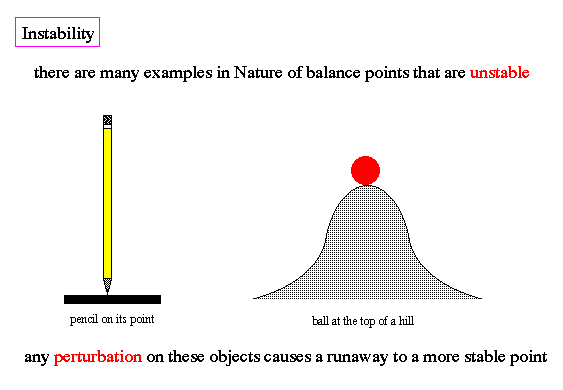
Values slightly below or above 1 in the early Universe rapidly grow to much less than 1 or much larger than 1 (like a ball at the top of a hill). So the fact that the measured value of 0.2 is so close to 1 that we expect to find in the future that our measured value is too low and that the Universe has a value of Ω exactly equal to 1 for stability.

And therefore, the flatness problem is that some mechanism is needed to get a value for Ω to be very, very close to one (within one part in a billion billion).
Fine-tuned Universe :
There are four basic levels of fine-tuning that concern us. The first is cosmological, as discussed above, that the cosmic boundary conditions are just right for the development of life and the fundamentals of physics are suitable for the organization of complex organisms.
The second level deals with our local conditions, the environment of the Earth. The Earth's size and age, distance from the Sun, abundance of chemical elements, etc. are just right for the development of life. One could argue that, since there are many stars and planets, this condition is not important.
Third, primate development, our ancestors over the last 500 million years were highly adapted to perennially changing environmental conditions. Is this process fine-tuned to one species (development of tools, shelter, crops, fire)? The fossil record shows that we had multiple cousin species that developed similar characteristics, we were among the particularly well-adapted ones.
Fourth, we have thus far survived our technological advances, particular in the area of weapons of mass destruction. It would be critical to know if other civilizations exist in other solar systems that have avoided self extinction.
The last three are key to the selected observer effect. That we exists to ask the question "Why are we here?". We would not exist to ask the question unless they conditions were right. However, there is nothing special about the last three conditions. There is plenty of evidence of other solar systems, other tool-using species in the past and, at least so far, avoidance of self-extinction. This leaves the cosmological condition of a "friendly" universe to complex organisms (not even carbon-based organism) as the remaining question.
Anthropic Principle and Inflation :
The solution to the anthropic principle appears to lie in the very early Universe, moments after the Big Bang, the inflation era. Our old view of the Universe was one of newtonian expansion, at less than the speed of light.
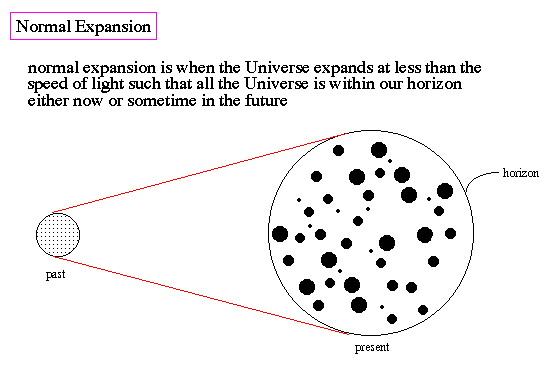
However, now we know that, because of symmetry breaking at the GUT unification point, spacetime and matter separated and a tremendous amount of energy was released. This energy produced an overpressure that was applied not to the particles of matter, but to spacetime itself. Basically, the particles stood still as the space between them expanded at an exponential rate.

During inflation, the Universe expanded a factor of 1054, so that our horizon now only sees a small piece of what was the total Universe from the Big Bang.

Our visible Universe, the part of the Big Bang within our horizon, is effectively a `bubble' on the larger Universe. However, those other bubbles are not physically real since they are outside our horizon. We can only relate to them in an imaginary, theoretical sense. They are outside our horizon and we will never be able to communicate with those other bubble universes.
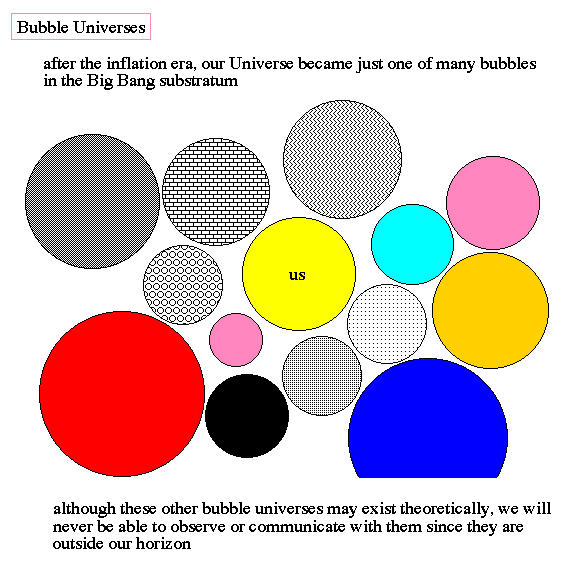
Inflation's answer to the anthropic principle of any form is that many bubble universes were created from the Big Bang. Our Universe had the appropriate physical constants that lead to the evolution of intelligent life. However, that evolution was not determined or required. There may exist many other universes with similar conditions, but where the emergent property of life or intelligence did not develop.
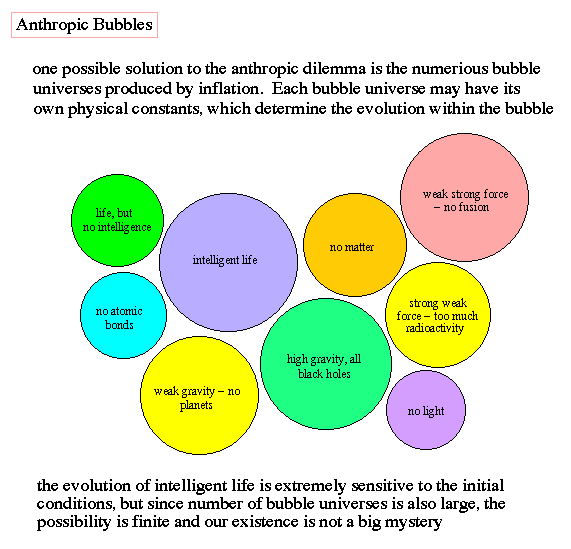
Hopefully a complete Theory of Everything will resolve the `how' questions on the origin of physical constants. But a complete physical theory may be lacking the answers to `why' questions, which is one of the reasons that modern science is in a crisis phase of development, our ability to understand `how' has outpaced our ability to answer if we `should'.
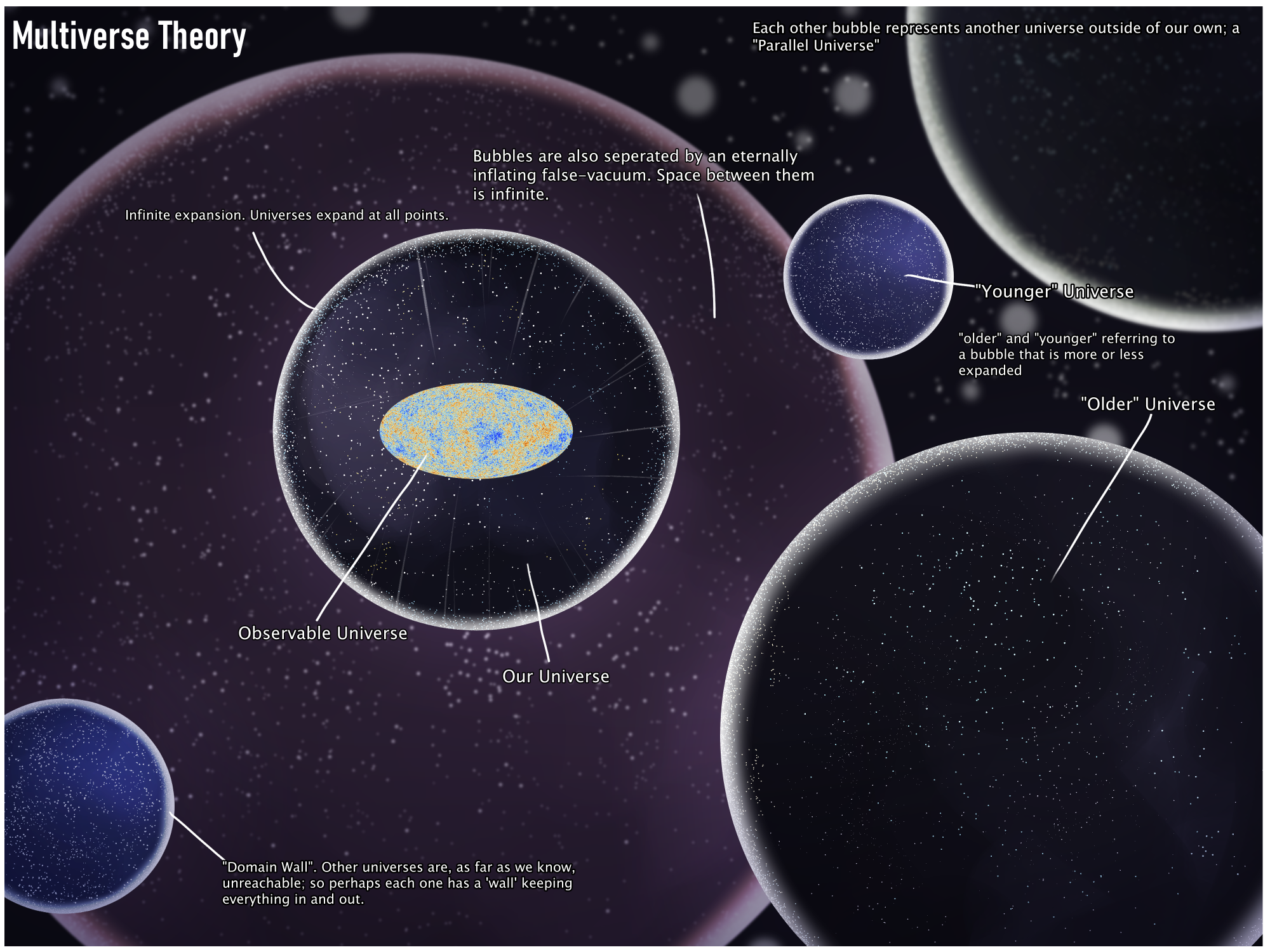
Inflationary Cosmology:
The anthropic principle does demonstrate that all of our cosmological models are constructed by augmenting the results of observations by a philosophical principle. For example, the Copernican principle (now known as the cosmological principle) states that the portion of the Universe we observe is not special or privileged, but is representative of the whole. From this we derive a great deal about the evolution of the Universe (e.g. it is expanded) and extrapolate the conditions of the early Universe (where we develop the answers to questions such as where to all the elements come from).
But the anthropic principle brings to light a critical flaw in our science of cosmology, that our observations necessarily involve observer selection effects. The biggest, and unavoidable, selection effect is that our location in time and space must be consistent with the existence of observers (sounds a lot like quantum mechanics, but this is slightly different). For example, we are not here to observe the first few seconds of the Universe since the formation of life was impossible at those epochs.
Stated this way, that the Universe we observe must be consistent with the existence of observers, the anthropic principle simply sounds like a tautology (i.e. 2 = 2). However, the anthropic principle becomes non-trivial in meaning if we drop the tacit assumption that the Universe, and the laws of Nature, necessarily assume the form that we observe, i.e. that this is not the only possible Universe. Inflation allows for the hitherto absolute and universal laws of physics to be more like local by-laws, valid only in our particular cosmic patch.
The multiverse concept resolves the anthropic paradox with the requirement that the laws of nature be environmental in the sense that other parts of reality to which we may or may not have any causal and empirical access have different laws. Whether through 1) a single Universe meaning a single, connected spacetime manifold that has distant spacetime regions with varying constants of Nature or 2) distinct, spatio-temporally unconnected bubble universes in an overarching collection. The best we can hope is to identify aspects of our theories that make testable predictions from observations confined to our own universe and, if those tests are successful, to indirectly infer the existence and properties of the other universes.
The current inflationary cosmology states the very early Universe expands at a near-exponentially fast, cooling down by many orders of magnitude before transitioning to a period of much slower expansion and reheating. This solves the flatness problem by resulting in a state of very-near zero curvature at the end of inflation regardless of what the curvature was at its start. This also results in curvature so flat that an increase in curvature during normal expansion has yet to develop. Inflation also solves the horizon problem by stating that the homogeneous and isotropic nature to the Universe is due to the fact that all portions of spacetime were in causal contact in a very early inflationary period.
However, the flatness and horizon problems are old problems for cosmology that can actually be solved with other methods. The real power to inflationary cosmology is its ability to make precise and accurate predictions concerning the spectrum of the cosmic microwave background (CMB) fluctuations. The observed fluctuation pattern corresponds very well with the predictions from inflation models, so it has an empirical basis.
The mechanism for inflation is less understood. It is proposed that inflation is driven by one or more scalar fields, the so-called inflaton (think of a gravity field but without direction). The potential of the inflaton field is such that island universe formation is globally eternal. When it comes to an end, it does so only locally resulting in the formation of a causally isolate spacetime region that behaves like our observable Universe. As the process of island universe formation never stops, this means the multiverse of bubbles is continually being produced.

Now the connection between cosmology and the sub-atomic world is proposed by string theory. The objects in string theory are one-dimensional objects called strings (open if connected to spacetime, closed loops free from spacetime) and higher-dimensional analogs referred to as branes (short for membranes, think stretchy spacetime pieces). Particles are excitation modes of strings (like notes on a guitar). The behavior of strings comes into play at energies around the Planck scale, about 13 orders of magnitude greater than current technology.
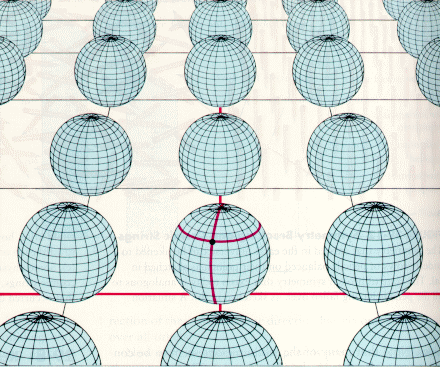
String theory predicts that spacetime has to be 10-dimensional with supersymmetric versions of all the massive particles to exist (some might be dark matter). Since spacetime is *not* 10-dimensional right now, then 6 of those spatial dimensions were effectively "compactified" during the inflation era. At the same epoch, string theory is believe to harbor an enormous amount of low energy states called vacua. These vacua manifest themselves as different higher level physical laws and different values of the constants, thus a mechanism for each bubble universe to maintain different properties. The proliferation of vacua in the string theory "landscape" produces what is known as the landscape multiverse.
If one could take a god's-eye-view of this landscape of universes, inflation would be continuing frantically in the overall superstructure, driven by exceedingly large vacuum energies, while here and there `bubbles' of low-, or at least lower-, energy vacuum would nucleate quantum mechanically from the eternally inflating region, and evolve into pocket universes. When eternal inflation is put together with the complex landscape of string theory, there is clearly a mechanism for generating universes with different local by-laws, i.e. different low-energy physics. Each bubble nucleation proceeding from a very large vacuum energy represents a symbolic `ball' rolling down the landscape from some dizzy height at random, and ending up in one of the valleys, or vacuum states. So the ensemble of physical by-laws available from string theory becomes actualized as an ensemble of pocket universes, each with its own distinctive low-energy physics. The total number of such universes may be infinite, and the total variety of possible low-energy physics finite, but stupendously big.
This train of thought produces three "levels" of a multiverse concept. The first level is an infinite spacetime region to which we have causal access and the fundamental physical constants vary on large scale lengths. This is not really a multiverse, just a really big Universe. And there is no evidence that the physical constants vary inside the observable Universe.
Level 2 would be a landscape multiverse, one where eternal inflation drives an infinite number of bubble universes with different constants and different higher-level physical laws, but the basic Standard Model of particles, supersymmetry and general relativity hold in all universes. This would resolve the fine-tuning of the anthropic principle.
A third level should be considered by involving quantum physics (i.e., the need for a quantum gravity framework). The two driving problems here are the many-worlds framework and non-locality of quantum interactions. A forced marriage of the sub-atomic and cosmological world results in something called the megaverse.
Megaverse:
Putting it all together, there are a series of key observations about the multiverse and its structure:
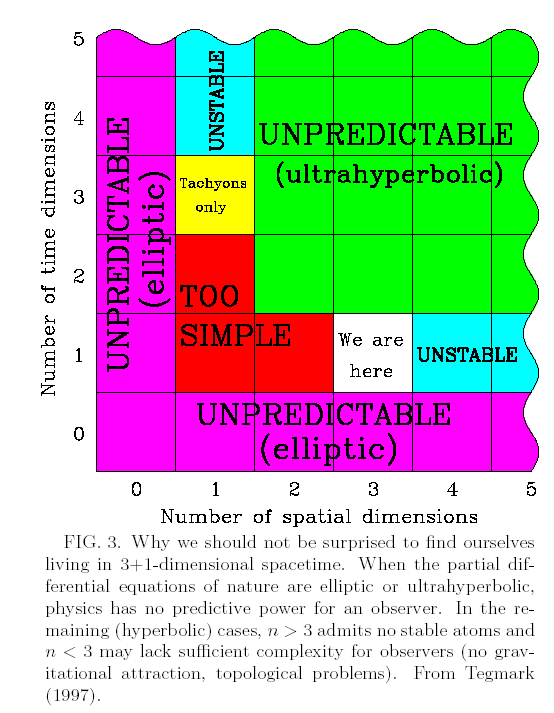

String theory proposes a 6D micro-world where the atomic forces are open loops stuck on spacetime and gravity is caused by closed loops free from spacetime. Thus, they need an 11D braneworld (each 10D brane is a separate universe (not a bubble, a parallel universe). And all the braneworlds are stacked up across the 11th dimension. In other words, we need a larger structure than the multiverse, a stack of parallel braneworlds.


Gravity is weak cause it travels across the braneworlds.
Arguments Against the Megaverse Concept:
It is sometimes objected that because our observations are limited to a single universe (e.g. a Hubble volume) then the existence of other universes cannot be observed, and so their existence cannot be considered a proper scientific hypothesis. Even taking into account the fact that future observers will see a larger particle horizon, and so have access to a bigger volume of space, most regions of the multiverse (at least in the eternal inflation model) can never be observed, even in principle. While this may indeed preclude direct confirmation of the multiverse hypothesis, it does not rule out the possibility that it may be tested indirectly. Almost all scientists and philosophers accept the general principle that the prediction of unobservable entities is an acceptable scientific hypothesis if those entities stem from a theory that has other testable consequences.
It is occasionally argued that the observed Universe is the unique possible Universe, so that talk of `other' universes is ipso facto meaningless. Einstein raised this possibility when he said, in his typical poetic manner, that what really interested him was whether `God had any choice in the creation of the world'. To express this sentiment more neutrally, Einstein was asking whether the Universe could have been otherwise (or nonexistent altogether). The hope is sometimes expressed that once a fully unified theory of physics is achieved, it will turn out to have a unique solution corresponding to the observed Universe. It is too soon to say whether string theory will eventually yield a unique description (so far, the evidence is to the contrary), but the hypothesis of a unique reality would in any case seem to be easily dispatched. The job of the theoretical physicist is to construct mathematically consistent models of reality in the form of simplified, impoverished descriptions of the real world. For example, the so-called Thirring model describes a two spacetime dimensional world inhabited by self-interacting fermions. It is studied because it offers an exactly soluble model in quantum field theory. Nobody suggests the Thirring model is a description of the real world, but it is clearly a possible world. So unless some criterion can be found to eliminate all the simplified models of physics, including such familiar constructs as Newtonian mechanics, there would seem to be a strong prima facie case that the universe could indeed have been otherwise that `God did have a choice'.
The megaverse theory forces us to confront head-on the contentious issue of what is meant by physical reality. Is it meaningful to assign equal ontological status to our own, observed, Universe and universes that are never observed by any sentient being? This old philosophical conundrum is exacerbated when account is taken of the nature of observation. In most discussions of megaverse theory, an observer is simply taken to mean a complex biological organism. But this is too restricted. Most scientists are prepared to entertain the possibility of conscious machines, and some artificial intelligence (AI) advocates even claim we are not far from producing conscious computers. In most megaverse theories, although habitable universes may form only a sparse subset, there is still a stupendous number of them, and in many cases an infinite number (that is the case with eternal inflation, for example). It is therefore all but inevitable that some finite fraction of habitable universes in this vast, possibly infinite, set, will contain communities of organisms that evolve to the point of creating artificial intelligence or simulated consciousness. It is then but a small step to the point where the engineered conscious beings inhabit a simulated world. For such beings, their `fake' universe will appear indistinguishable from reality. So should we include these simulated universes in the ensemble that constitutes the megaverse?
A final objection to the existing megaverse theories is a challenge to the criteria for defining universes. In most megaverse theories, universes are labeled by laws of physics and initial conditions. Even in extreme megaverse scheme, the chosen criterion is mathematical consistency. It might be objected that these terms are narrow and chauvinistic - indeed, just the sort of criteria to be expected from mathematical physicists. Other ways of categorizing universes are conceivable, and could lead to even larger concepts of megaverse. Examples might be the set of all possible artistic structures, or morally good systems, or mental states. There may be criteria for categorization that lie completely beyond the scope of human comprehension. To suppose that the ultimate nature of reality is founded in twenty-first century human physics seems remarkably hubristic.